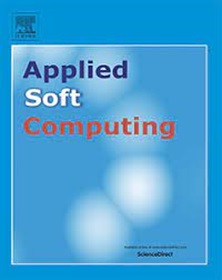Artificial intelligence for accurate classification of respiratory abnormality levels using image-based features and interpretable insights
IF 7.2
1区 计算机科学
Q1 COMPUTER SCIENCE, ARTIFICIAL INTELLIGENCE
引用次数: 0
Abstract
Accurate classification of respiratory abnormality levels is crucial for early detection and diagnosis of respiratory diseases, making it a pivotal area in the field of medical diagnostics. This study proposes a novel artificial intelligence approach for accurate classification of respiratory abnormality levels. By transforming respiratory sound time-series data into image representations using recurrent plot, Markov transition field, and Gramian angular field, we capture intricate temporal patterns and spatial relationships. A deep neural network autonomously extracts discriminative features from these representations, subsequently integrated into machine learning classifiers. Leveraging the International Conference on Biomedical and Health Informatics (ICBHI) database, our methodology achieves remarkable classification accuracy of 100% for both binary and four-class scenarios, accurately distinguishing normal from abnormal sounds, and discriminating between crackles, wheezes, and their combinations. The SHapley Additive exPlanations (SHAP) method enhances interpretability, providing insights into feature importance and decision-making processes. This interpretable and high-performing approach offers significant promise for enhancing the accuracy and reliability of respiratory disorder diagnosis and treatment planning in clinical settings, potentially improving patient outcomes and healthcare efficiency.

求助全文
约1分钟内获得全文
求助全文
来源期刊

Applied Soft Computing
工程技术-计算机:跨学科应用
CiteScore
15.80
自引率
6.90%
发文量
874
审稿时长
10.9 months
期刊介绍:
Applied Soft Computing is an international journal promoting an integrated view of soft computing to solve real life problems.The focus is to publish the highest quality research in application and convergence of the areas of Fuzzy Logic, Neural Networks, Evolutionary Computing, Rough Sets and other similar techniques to address real world complexities.
Applied Soft Computing is a rolling publication: articles are published as soon as the editor-in-chief has accepted them. Therefore, the web site will continuously be updated with new articles and the publication time will be short.
 求助内容:
求助内容: 应助结果提醒方式:
应助结果提醒方式:


